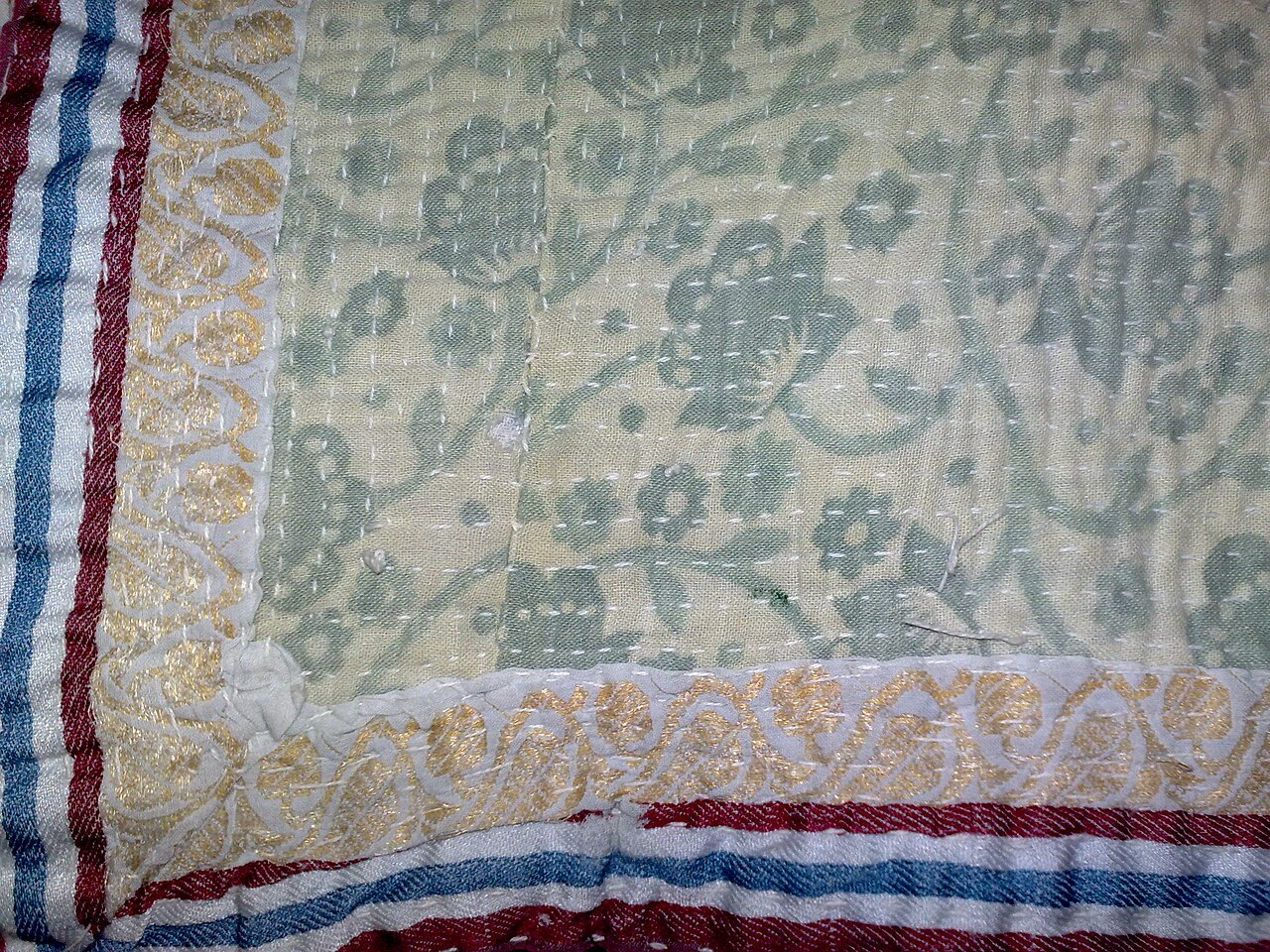Blue Hat or How I got from 14th century Sicily to India to Mamluk Empire is 10,000,000 easy steps:
Origin:
A million years ago (I’m very bad at time reckoning), I took a class that catapulted me into the research that would occupy me for the next amount (?) of time. It started with the Tristan/Guicciardini Quilt. It’s white linen with brownish and white embroidery, telling the story of Tristan and Isolde dating from the mid-14th century. I made a version based on the story of Penthesilea that went to a nice lady named Thyra as a gift. Even when I finished the quilt it stuck in my head. It seemed like such a one-off item based on looking at museum databases, books, and academic papers but there had to be more out there. Quilting is such a practical way of adding depth, strength and potentially warmth that it had to be out there. Turns out that my instinct, for once, was correct. Little by little I started to find other instances of quilting in a non-armor context. My first adventure was finding a bright chartreuse quilt made of silk and COVERED with ships, mythical animals, and hunters in European dress. The Europeans stuck out because the quilt was purported to be made in India. I kept finding more of these quilts in inventories all over, same motifs, same materials. I then found what the Portuguese called colcha or in India, Kantha. The ones from Bengal are yellow silk on white cotton, while the ones from Gujarat come in more colors. Here’s the thing…how where these things getting to Europe? Turns out my day job of international shipping would come in handy.
Often, we are taught in school that silk and spices were coming from the East. I guess I didn’t picture finished or semi-finished goods being traded. When I looked deeper, I found a deep vein of trade networks, church run workshops (with the usual exploitation and an Inquisition I had never heard about), Habsburg gift giving and my favorite…That India was producing silk for different markets as early as the 12th century. I’ll get back to that at some point.
Then I started finding these blue caps with quilted designs that were said to come from Mamluk territories. There is almost no other information. Some seemed to have signs of being from a funerary context (because decomposing humans do gross things to fabric) but very little else. I found about 3 that were basically identical, only the amount of gold differed. Compared to anything else I have found, that’s a lot of repeating items for the 12th – 15th century. Normally I feel lucky to find one of something, let alone a catalog of identical items. To me, this is a sign of workshops producing quilts and hats for a mass market of sorts. What do quilts from India and hats from Egypt and the Levant have to go with each other. I then found a paper by Dr. Sumiyo Okumura that linked the quilts to Chios which was Ottoman territory through part of this time.
I had a lot of thoughts about quilts, hats, double eagles (I’ll explain at some point). I was confused, I pulled out a map of Europe and the near east and traced the places that had these items pop up. Looks like a lot of these items are found in the eastern Mediterranean. Was there a regional trade in mass manufactured silk goods? How would I explain the Indian connection? Turns out, there is a handy trade corridor from the Mediterranean Sea to the Red Sea to the Gulf of Aden and out to the Arabian Sea. From there you could head to all points beyond.
There are links to the Mughal Empire, which was founded by Babur, who descended from Timur and Ghengis Khan. This brings Turkic/Mongol/Persian connection. I’m hoping to illustrate this on a map at some point.
So, the hat?
I would like to start making quilts again. I’ve gotten a bit lost in the research wilderness and want to find my way back to making and doing. They are lovely little items; the scale isn’t too wild. A good start.














